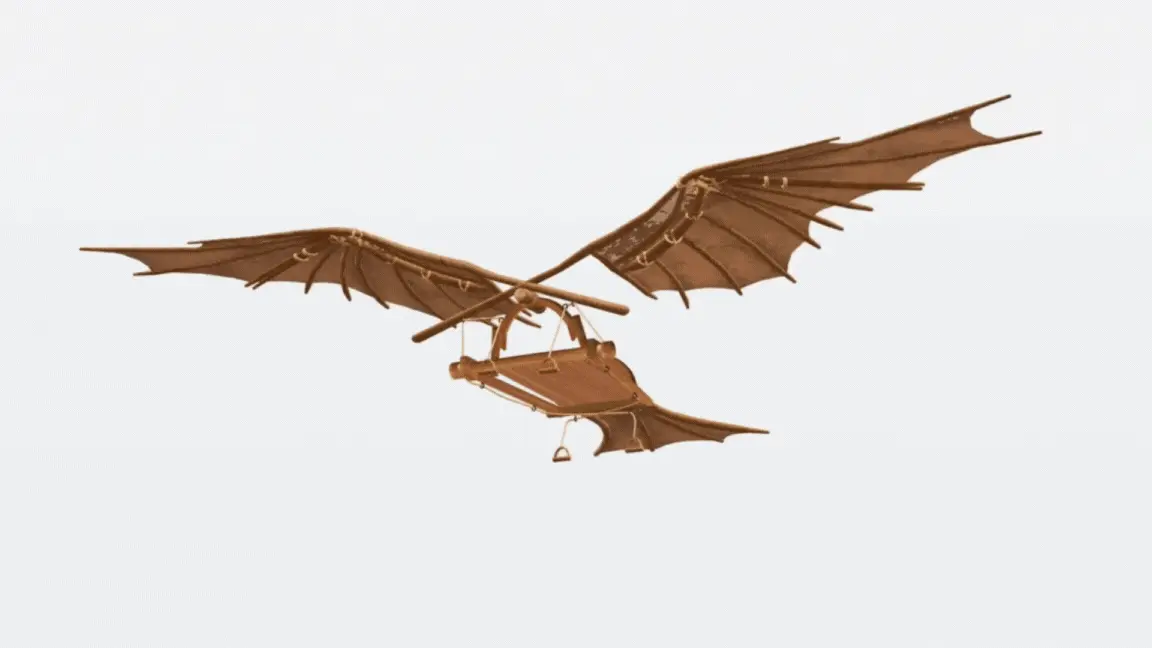Anatomy
At the 1939 World’s Fair, Robert Latou Dickinson Demystified Pregnancy for a Curious Public
The gynecologist and sculptor’s “Birth Series” broke barriers, but how do his views on abortion, race and women’s health square with what we know today?
Explore Animated Models, Digitized Sketches and More in Leonardo da Vinci's Largest-Ever Online Retrospective
The new Google Arts & Culture hub features high-resolution scans, 3D renderings and artificial intelligence experiments
Is This the Earliest Known Phallic Art?
Researchers think the 42,000-year-old artifact was carved from graphite to resemble a penis
See Tables Crafted From Human Tissue, a Toad With Eggs on Its Back and More at This London Museum
The newly reopened Hunterian Museum acknowledges the ethical quandaries posed by its collection of anatomical specimens
Why Did Scientists Wait So Long to Study the Snake Clitoris?
The delay is representative of a major problem in biology: Female and intersex animals are understudied compared with their male counterparts
Why a London Museum Is Removing the Skeleton of an 'Irish Giant' From View
Charles Byrne asked for his body to be buried at sea. Instead, an anatomist bought his bones and displayed them to the public
Scientists Discover That Snakes Have Clitorises
The finding highlights disparities in research on male and female animals
The Ten Best Science Books of 2022
From a detective story on the origins of Covid-19 to a narrative that imagines a fateful day for dinosaurs, these works affected us the most this year
Meet the Rare Gender-Neutral Kitten With No Sex Organs
The formerly homeless cat has now been adopted in the U.K.
What an Elephant’s Brain Reveals About Its Trunk
Elephants have tens of thousands of facial neurons, more than any other land mammal
How Does Breathing Affect Your Brain?
Neuroscientist are piecing together how the rhythm of respiration influences everything from cognition to emotion
Mysterious ‘Alien Goldfish’ May Have Been a Mollusk
The bizarre creature’s anatomy had stumped scientists for decades
Sniffing Out the Science of Smelling
From the lab to the art gallery, the latest efforts to understand the fragrant, musky, stinky and utterly baffling world of your nose
Lovebirds Use Their Beaks as a Third Limb While Climbing
Researchers find that their chops are as powerful as a rock climber's arms
Why Have Female Animals Evolved Such Wild Genitals?
From ducks to dolphins, females have developed sex organs that help them deter undesirable suitors and derive pleasure from non-reproductive behavior
How Bones Communicate With the Rest of the Body
A new vision of the skeleton as a dynamic organ that sends and receives messages suggests potential therapies for osteoporosis and other problems
This Wonder Bird Flies Thousands of Miles, Non-Stop, as Part of an Epic Migration
The more scientists learn about the Hudsonian godwit, the more they’re amazed—and worried
Did the Vikings Actually Torture Victims With the Brutal 'Blood Eagle'?
New research reveals the feasibility of the infamous execution method
Five Ways Humans Evolved to Be Athletes
An archaeologist explores how our prowess in sport has deep roots in evolution
Sharks' Intestines Spiral Like a Valve Invented by Nikola Tesla
Tesla's ingenious valve promoted a one-way flow of fluid without the need for moving parts, but, it turns out, evolution got there first
Page 2 of 5
:focal(1021x768:1022x769)/https://tf-cmsv2-smithsonianmag-media.s3.amazonaws.com/filer_public/aa/ec/aaecf93d-a3c1-46a8-8dd3-dc4fe1afd463/birth_atlast_plate_13.jpeg)

:focal(1402x908:1403x909)/https://tf-cmsv2-smithsonianmag-media.s3.amazonaws.com/filer_public/9a/08/9a08ec20-5e9d-4eca-aafe-73869ad27743/screen_shot_2023-06-26_at_10910_pm.png)
:focal(700x527:701x528)/https://tf-cmsv2-smithsonianmag-media.s3.amazonaws.com/filer_public/03/2f/032fd5fb-7bbe-4b1f-9cf8-5c16ede4f05f/skin-table.jpg)
:focal(800x602:801x603)/https://tf-cmsv2-smithsonianmag-media.s3.amazonaws.com/filer_public/03/52/0352bc59-a1c9-4fa9-a33b-e2315d2dff2f/gettyimages-1189411283_web.jpg)
:focal(628x341:629x342)/https://tf-cmsv2-smithsonianmag-media.s3.amazonaws.com/filer_public/48/73/48733035-ef9a-4629-97ba-0ef37b471414/1280px-the_surprizing_irish_giant_of_st_jamess_street_bm_186808085425.jpg)
:focal(600x451:601x452)/https://tf-cmsv2-smithsonianmag-media.s3.amazonaws.com/filer_public/4a/27/4a278e2a-f776-417e-9301-9262700996f9/death-adder-photo-by-luke-allen.jpg)
:focal(800x602:801x603)/https://tf-cmsv2-smithsonianmag-media.s3.amazonaws.com/filer_public/9e/69/9e69df77-49cc-47ac-8d24-8650e0e50d80/science-booklist-v1.jpg)
:focal(250x231:251x232)/https://tf-cmsv2-smithsonianmag-media.s3.amazonaws.com/filer_public/b5/c9/b5c9d039-8ee1-4764-be68-61b0b69f0b18/hope-2.jpeg)
:focal(1061x707:1062x708)/https://tf-cmsv2-smithsonianmag-media.s3.amazonaws.com/filer_public/9f/c4/9fc48192-36b9-443b-aee8-3f33668bc70f/gettyimages-1271819220.jpg)
:focal(800x602:801x603)/https://tf-cmsv2-smithsonianmag-media.s3.amazonaws.com/filer_public/59/4c/594c42a7-c840-48f2-890c-dc248e002dd5/gettyimages-90955374_web.jpg)
:focal(512x512:513x513)/https://tf-cmsv2-smithsonianmag-media.s3.amazonaws.com/filer_public/a9/b4/a9b45f81-39d6-4641-ad5e-f311cca70987/20tb-fossil1-jumbo.jpg)
:focal(1170x880:1171x881)/https://tf-cmsv2-smithsonianmag-media.s3.amazonaws.com/filer_public/1d/80/1d80d4e3-987f-4657-a759-36ca78bfa2ad/opener-smell.jpg)
:focal(1024x683:1025x684)/https://tf-cmsv2-smithsonianmag-media.s3.amazonaws.com/filer_public/0e/94/0e9412c7-0610-4c25-90de-a10d18ac9af7/2048px-rosy-faced_lovebird_agapornis_roseicollis_roseicollis_flock.jpeg)
:focal(800x602:801x603)/https://tf-cmsv2-smithsonianmag-media.s3.amazonaws.com/filer_public/ce/97/ce9718f6-6031-43a2-b658-483157be2a76/veve_interior_chap03_f02_web.jpg)
:focal(800x602:801x603)/https://tf-cmsv2-smithsonianmag-media.s3.amazonaws.com/filer_public/3b/ff/3bfffac9-eeca-4119-94f2-a9121fa101c1/bone-facts-3200x1200_web.jpg)
:focal(2550x1919:2551x1920)/https://tf-cmsv2-smithsonianmag-media.s3.amazonaws.com/filer_public/84/57/84572dab-eff9-42fa-accb-8345519d0fef/opener_-_janfeb2022_d16_migratorybirds.jpg)
:focal(700x527:701x528)/https://tf-cmsv2-smithsonianmag-media.s3.amazonaws.com/filer_public/ec/79/ec79655a-cc61-4513-81f9-6bdba22e6565/blood_eagle.jpg)
:focal(792x1036:793x1037)/https://tf-cmsv2-smithsonianmag-media.s3.amazonaws.com/filer/ec/06/ec0658c6-799e-4337-af4d-3b9b49abf6e8/gettyimages-1331457253_web.jpg)
:focal(496x346:497x347)/https://tf-cmsv2-smithsonianmag-media.s3.amazonaws.com/filer/94/c7/94c74633-00b9-4e99-8814-bf9c158df9ca/2c33dbf6-3209-435a-b365-c79089df042c_4_5005_c.jpeg)